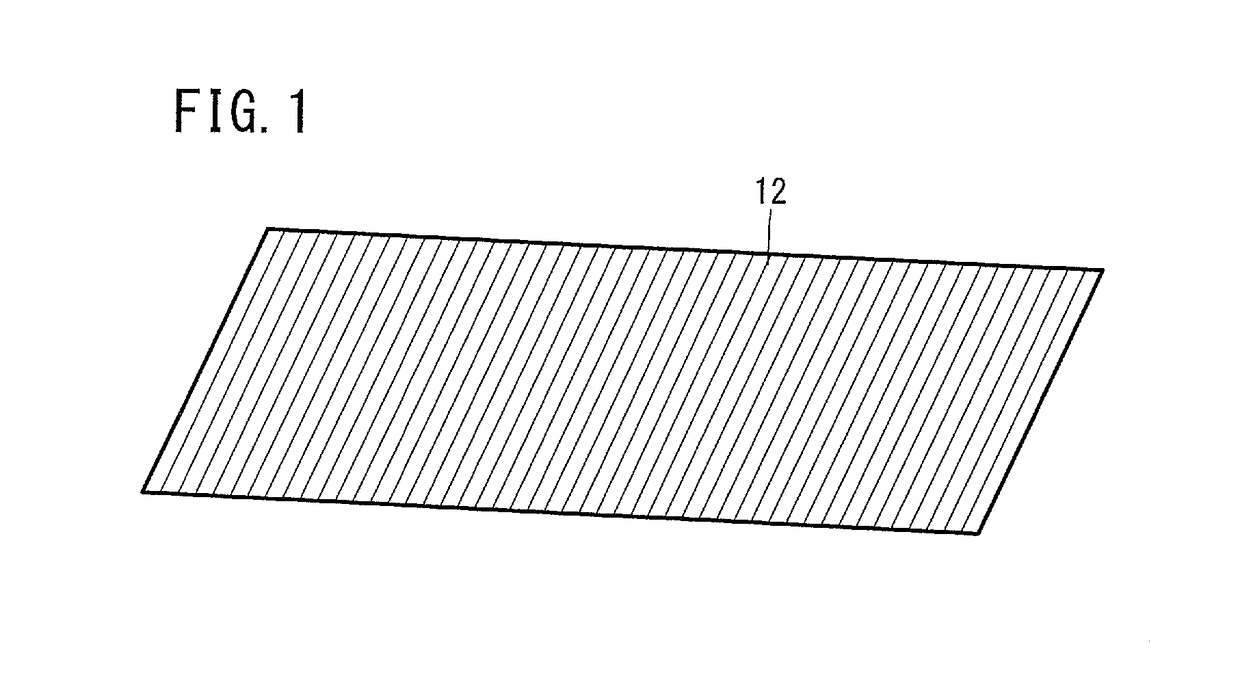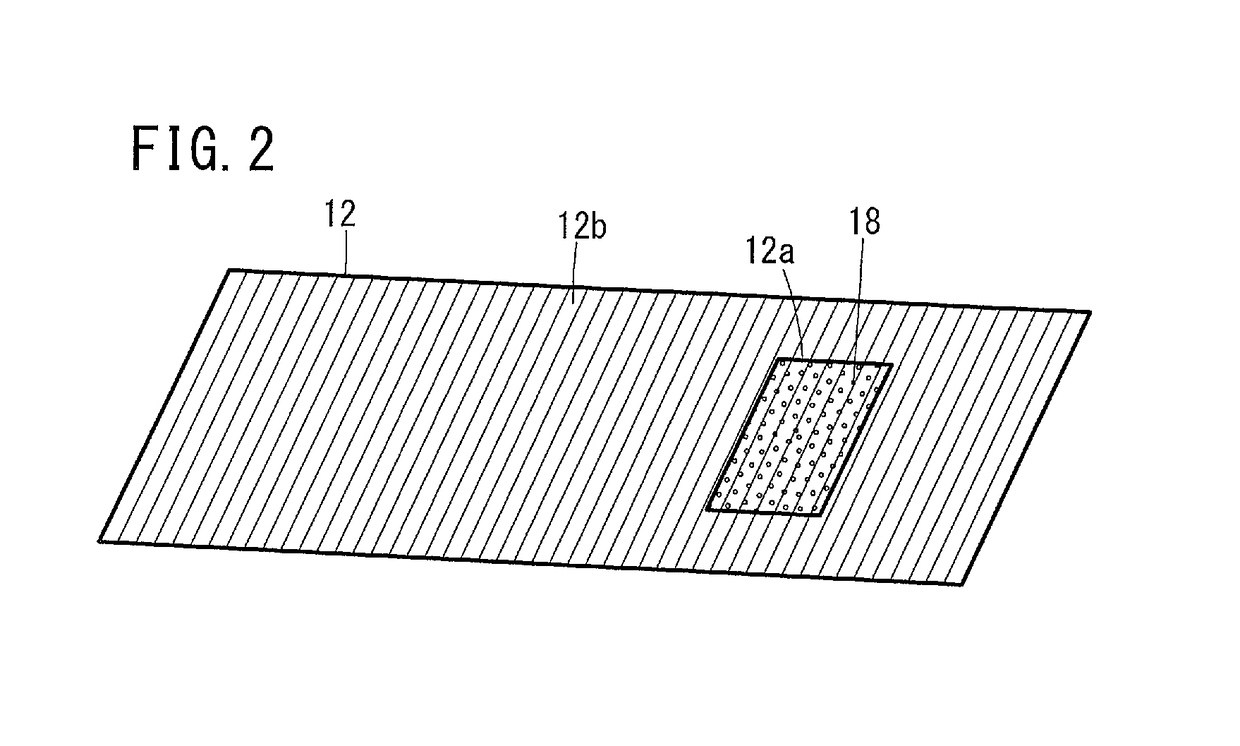Fiber-reinforced composite material and method for manufacturing same
a fiber-reinforced composite material and fiber-reinforced technology, applied in the field of fiber-reinforced composite materials, can solve the problems of mechanical strength, design appearance, and similar deterioration in the final product of frp-molded articles, and achieve the effect of preventing the disturbance of reinforcing fiber orientation, and ensuring the effect of forming
- Summary
- Abstract
- Description
- Claims
- Application Information
AI Technical Summary
Benefits of technology
Problems solved by technology
Method used
Image
Examples
Embodiment Construction
[0038]A preferred embodiment of the fiber-reinforced composite body of the present invention will be described in detail below in relation with a method for producing the same with reference to the accompanying drawings.
[0039]As shown in FIGS. 1 to 9, a fiber-reinforced composite body 10 according to this embodiment (see FIG. 9) contains a plurality of fiber bases 12 and the matrix resin 14 (see FIGS. 1, 9, etc.). Each of the fiber bases 12 is a UD material sheet containing a reinforcing fiber of continuous fiber pieces oriented in one direction. The reinforcing fiber in the fiber base 12 is not limited to the continuous fiber, and may be a long fiber or a short fiber. The orientation of the fiber pieces of the reinforcing fiber is not limited to the one direction, and the reinforcing fiber pieces may be oriented in a plurality of directions, e.g. in random directions. Thus, the fiber base may be a woven fabric (cloth material) or a non-woven fabric.
[0040]Examples of preferred mater...
PUM
| Property | Measurement | Unit |
|---|---|---|
| temperature | aaaaa | aaaaa |
| temperature | aaaaa | aaaaa |
| temperature | aaaaa | aaaaa |
Abstract
Description
Claims
Application Information
 Login to View More
Login to View More - R&D
- Intellectual Property
- Life Sciences
- Materials
- Tech Scout
- Unparalleled Data Quality
- Higher Quality Content
- 60% Fewer Hallucinations
Browse by: Latest US Patents, China's latest patents, Technical Efficacy Thesaurus, Application Domain, Technology Topic, Popular Technical Reports.
© 2025 PatSnap. All rights reserved.Legal|Privacy policy|Modern Slavery Act Transparency Statement|Sitemap|About US| Contact US: help@patsnap.com



